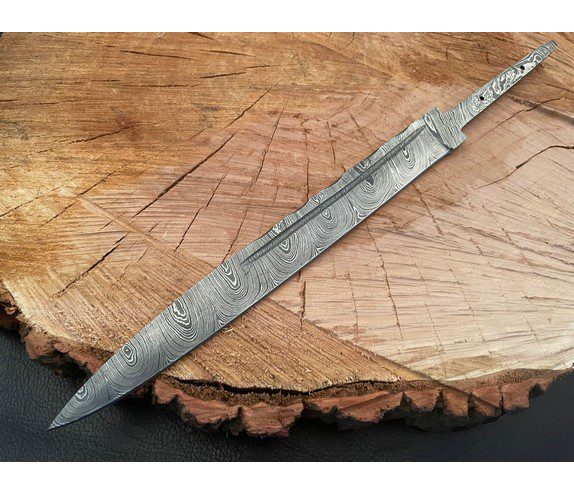The blade is the heart of a knife, and the design of the blade can greatly affect its performance and aesthetics. Whether you’re a knife enthusiast or a beginner in knife making, it’s important to understand the different types of blade designs and their pros and cons. This article will explore some of the most common knife blanks blade designs and their characteristics.
Clip Point Blade
The clip-point blade is one of the most popular blade designs and is characterized by a concave curve on the back of the blade that leads to a fine, pointed tip. The clip-point blade is versatile and can be used for various tasks, including slicing, piercing, and detail work. The concave curve on the back of the blade also makes it easier to control the tip of the blade, making it ideal for precision cutting.
Drop Point Blade
The drop point blade is similar to the clip point blade but has a convex curve on the back that leads to a broad, rounded tip. The drop point blade is strong and versatile, making it ideal for hunting and outdoor activities. The broad tip also makes it easier to control the blade when performing heavy-duty tasks.
Tanto Blade
The tanto blade is Japanese-inspired and features a straight blade with a chisel-like point. The tanto knife blank is strong, durable, and designed for piercing and stabbing tasks. The chisel point also makes it easier to penetrate tough materials, making it ideal for self-defense.
Spear Point Blade
The spear point blade features a symmetrical blade with a point aligned with the blade’s center line. The spear point blade is versatile and can be used for various tasks, including piercing, slicing, and detail work. The symmetrical design also makes it easy to control the blade, making it ideal for precision cutting.
Trailing Point Blade
The trailing point blade features a concave curve on the back of the blade that leads to a point higher than the blade’s spine. The trailing point blade is designed for slicing tasks and is commonly used in fillet and skinning knives. The higher point also makes it easier to control the blade when performing delicate tasks.
Straight Back Blade
A straight edge and a curved spine characterize the straight-back blade. The straight-back blade is versatile and can be used for various tasks, including slicing, chopping, and detail work. The curved spine also makes it easy to control the blade when performing precision cutting tasks.
Conclusion
Choosing the right blade design for your knife blank is a matter of personal preference and intended use. Each blade design has pros and cons, and it’s important to consider these factors when selecting a blade design. The clip point and drop point blades are versatile and can be used for various tasks, while the tanto blade is designed for piercing and self-defense. The spear point blade is symmetrical and easy to control, while the trailing point blade is designed for slicing. The straight-back blade is versatile and can be used for various tasks. Ultimately, the right blade design for your knife blank depends on your preferences and intended use.

